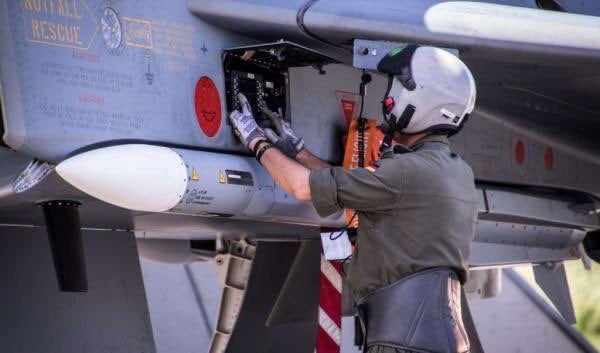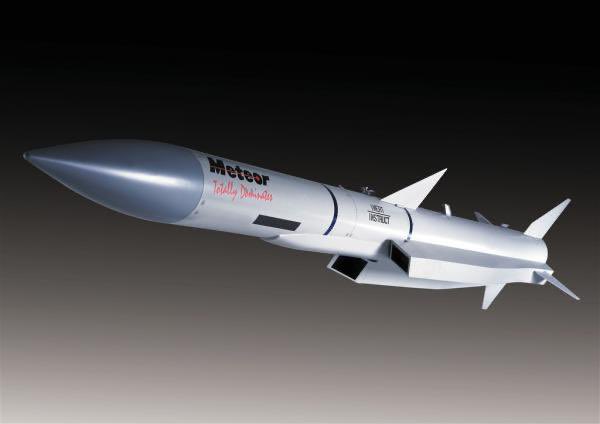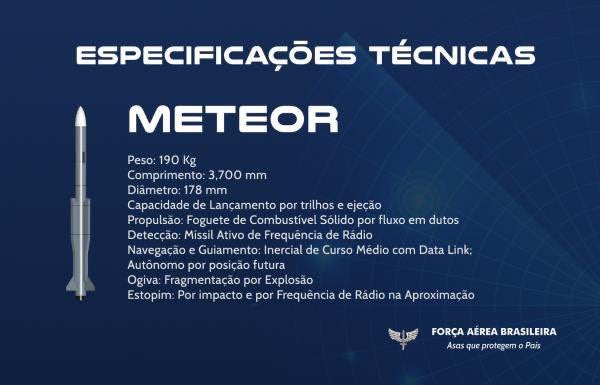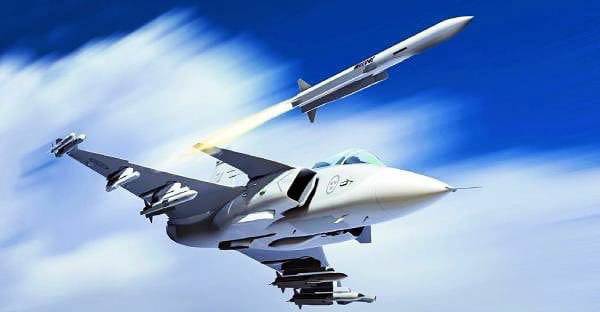The Brazilian Air Force Receives New Batch of Meteor Missiles
The Brazilian Air Force (FAB) announced that it has received the second batch of Meteor missiles, which will be installed on the four F-39E Gripen multi-role fighters it received from Swiss aircraft manufacturer Saab Aeronautics last month. The new batch was delivered as part of a deal for 900 million Brazilian Reals (roughly 200 million Euros) signed in 2019 between the Brazilian air force and the European company MBDA for the supply of 100 Meteor air-to-air missiles.
The initial batch of the Meteor missile, consisting of multiple units, was purchased for the development of the aircraft, according to the Brazilian Air Force. The first batch was most likely delivered after the first Gripen aircraft was delivered to Brazil in 2019 to begin the flight testing program.

Flight activities in Brazil began in mid-2020, and included testing of the aircraft in tropical climates and weapons integration, as well as flight and environmental control system testing. Brazil has bought only a few Meteor missiles, as most jet missile launches are now conducted in simulated and virtual environments, with the software reporting the actual probability of hitting the target. As a result, the news of the first batch’s delivery was not reported in the press.
According to a statement released by the Brazilian Air Force, the second batch of Meteor missiles can provide pilots with unquestionable air superiority in defense of national interests, improving the possibilities of avoiding close combat with enemy aircraft. The Meteor missile, according to the Air Force, will be a “unprecedented game changer,” and a “major milestone” for Brazilian national air power.
The Meteor missile, manufactured by the European firm MBDA under the leadership of the United Kingdom and in collaboration with six European countries, is the newest weapon to be utilized by FAB. Meteor is a next-generation, active radar-guided, beyond-visual-range air-to-air missile (BVRAAM). Meteor is more of an air-to-air cruise missile than a conventional guided air-to-air rocket. Instead of a conventional rocket engine, it is propelled by a solid-fuel, variable-flow channel rocket (also known as a ramjet).

According to the information given by MBDA, the Meteor missile is a weapon system capable of propulsion until it reaches the target, thanks to the ramjet propulsion system. The missile’s speed loss in the air is mitigated. Furthermore, because the missile maintains thrust until it reaches the target and the speed loss is minimal, the energy loss in terms of the missile’s maneuverability is minimized.
The solid-fuel ramjet engine propels the missile faster than Mach 4 and delivers thrust and mid-course acceleration to intercept the target. Another advantage of the missile is that, despite the advancements, it is not a large missile. With a length of 3.7 meters and a mass of 190 kilograms, it can fit under the wing of most modern combat aircraft, and its range surpasses 100 kilometers.

The weapon also has data link communication capabilities. Meteor is designed to fulfill the needs of a network-centric environment and can be controlled using third-party data, giving the Meteor user – the pilot – the most adaptable weapon system available.
Over the last decade, Brazil has grown into a regional military and economic power, with the region’s largest defense budget, the world’s eleventh defense expenditure, and nearly 60% of South American GDP in 2017. Brazil will have the most capable Air Force in Latin America in terms of air-to-air missions in a few years, with the F-39E Gripen delivered as part of an order for 36 aircraft equipped with the latest missiles and further deliveries on the way.

